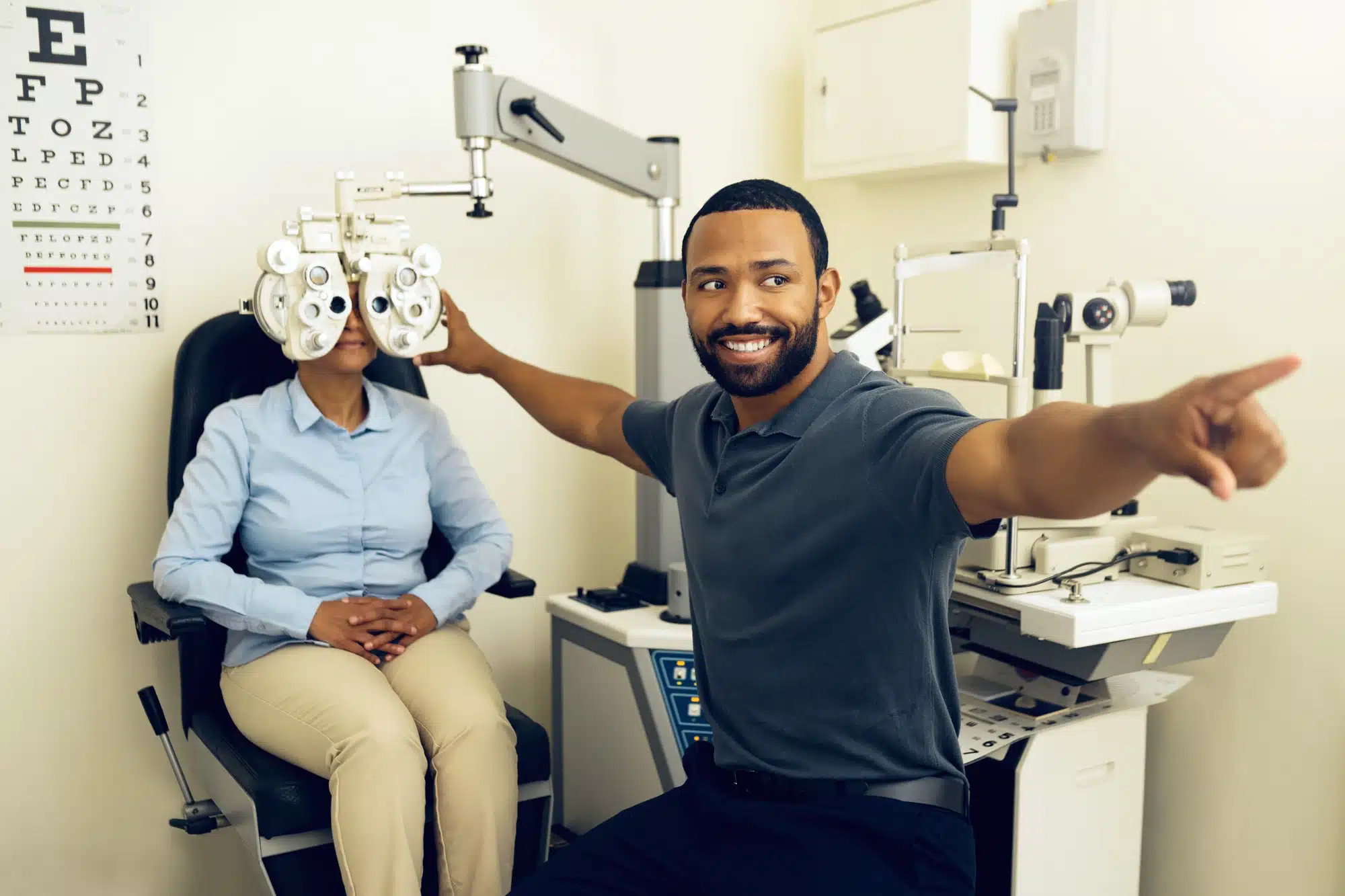What Is Exophoria?
Exophoria is an eye condition where the eyes have a tendency to drift outward, in the opposite direction of each other, when at rest. This can cause issues with binocular vision, depth perception, and eye strain. Exophoria is typically not a serious condition and can be managed through vision therapy, prism glasses, or exercises to strengthen the eye muscles. However, in some cases, exophoria may be a symptom of a more serious underlying eye or neurological condition, so it is recommended to consult an eye care professional for proper diagnosis and treatment.
Symptoms of Exophoria: Recognizing the Signs
Exophoria often goes unnoticed until the symptoms become obvious. Symptoms of exophoria may include eye strain, headaches, difficulty concentrating, blurry vision, and feeling like the eyes are constantly working to focus. Other signs may include double vision, dizziness, and trouble with depth perception.When to Seek Help for Exophoria Symptoms
Seeking help for exophoria symptoms is necessary when you begin to experience eye strain, headaches, blurred vision, or double vision on a regular basis. If you've noticed a loved one's eyes often turning outward, or if their symptoms become frequent, do not delay reaching out to Vision Specialists. Ignoring exophoria symptoms can lead to further discomfort and potentially worsen your visual condition, so it is best to address them promptly with professional help.Causes and Risk Factors of Exophoria
Exophoria stems from a combination of genetic predisposition and environmental factors. Often developing in childhood, risk factors may include prolonged screen time, strabismus in family history, or other eye problems that stress the eyes' ability to focus. In addition, conditions impacting the brain or nerves related to eye movement can contribute to the onset of exophoria.
Exophoria vs. Exotropia: Knowing the Difference
While both conditions involve an eye's tendency to drift outward, exophoria is a latent condition (meaning it is often hidden or not noticed) that only occurs when the eyes' fusion is interrupted. In contrast, exotropia is a more pronounced form of eye misalignment, usually observable as an eye that consistently turns outward. An individual struggling with improper eye alignment should seek evaluation to determine whether they're experiencing exophoria or exotropia, as each condition warrants a tailored treatment.Exophoria Misdiagnoses: The Role of Binocular Vision Dysfunction in Vision Care
At Vision Specialists, we often encounter exophoria as a misdiagnosis or present alongside another binocular vision dysfunction condition known as vertical heterophoria. While both conditions involve the misalignment of eyes, exophoria is a horizontal misalignment while vertical heterophoria is a vertical misalignment. Again, professional treatment is critical to pinpoint if the problem lies with exophoria or another vision impairment.How Vision Specialists Can Identify and Treat Vertical Heterophoria Misdiagnosed as Exophoria
Since the vertical heterophoria and exophoria may present with similar symptoms, leading to misdiagnosis, our team diligently works to differentiate these conditions. We conduct comprehensive eye exams, utilizing advanced techniques to identify the root cause affecting a patient's vision. Through the customized fitting of microprism lenses, we treat those with vertical heterophoria who may have been thought to be suffering from exophoria.Effective Treatment Options for Exophoria
Several effective treatment options for exophoria include vision therapy, prism glasses, and patching. Vision therapy involves a series of eye exercises and activities to strengthen the eye muscles and improve coordination. Prism glasses may be prescribed to help align the eyes properly and reduce strain. Patching is another option, where one eye is temporarily covered, to help strengthen the weaker eye. It is important to consult with an eye care professional to determine the best treatment option for your specific case of exophoria.
The Role of Prism Glasses in Exophoria Treatment
By using prism glasses, the images that the eyes see are able to correctly align, reducing the strain and discomfort associated with exophoria. These glasses work by redirecting light entering the eyes, helping them focus and work together more effectively. Prism glasses are prescribed by eye doctors as part of a comprehensive treatment plan for exophoria.The Role of Patching in Exophoria Treatment
As mentioned, patching is a treatment option for exophoria. By patching one eye, the brain must rely more on the other eye, which can help improve eye coordination and reduce outward turning. Patching can be particularly beneficial for children with exophoria, as their visual system is still developing and can be more easily corrected.Prognosis and Outlook for Exophoria Patients
The prognosis and outlook for patients with exophoria can vary depending on the severity of their condition and their response to treatment. For many patients, exophoria can be successfully managed with prism glasses or other interventions prescribed by their eye care provider. With proper treatment and regular monitoring, many patients are able to improve their symptoms and maintain good eye alignment. However, some cases of exophoria may be more challenging to treat and could require more intensive therapy or even surgery in rare cases. Overall, the prognosis for exophoria patients holds a positive outlook with appropriate care and management!Seeking Help: When to Consult a NeuroVisual Specialist for Exophoria and/or BVD?
Living with exophoria and/or BVD doesn’t have to be the norm. You don’t have to keep suffering with headaches, anxiety, or discomfort. Consider getting screened for BVD with our online tool. The NeuroVisual doctors at Vision Specialists are specially trained to correctly diagnose and treat exophoria and BVD. Contact Vision Specialists of Michigan and get started with the right therapy for your symptoms, and see how much better your vision and overall well-being can be.Filed Under:







